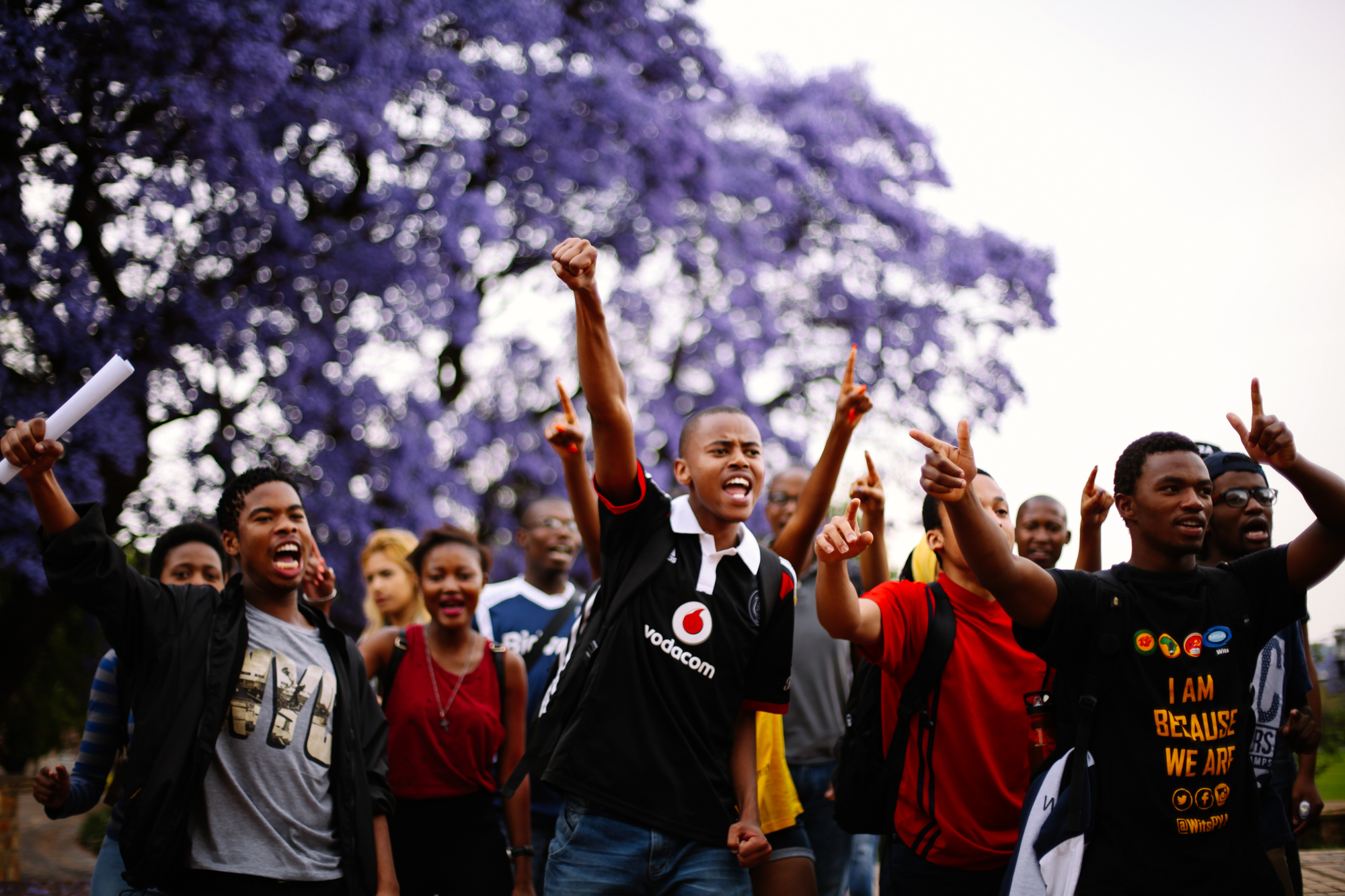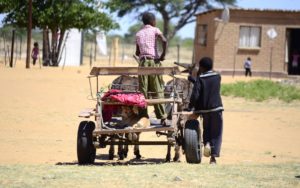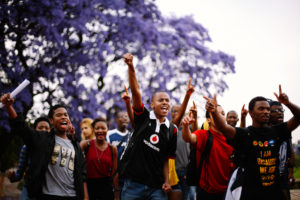The two-way street between poverty and education

JOHANNESBURG, SOUTH AFRICA – OCTOBER 15: Wits students embark on a protest over an increase on the tuition fees on October 15, 2015 in Johannesburg, South Africa. The students shut down the campus yesterday and declared its grounds a “no in, no out” zone. Classes and other academic activities were also suspended. (Photo by Gallo Images / Nicholas Rawhani)
The relationship between poverty and education runs in both directions. Lack of a good quality education means that many South Africans cannot fully participate as workers or entrepreneurs in the economy. This condemns them to unemployment or low-wage employment, and prevents their human potential being unlocked to allow them to become productive workers and citizens.
Better educated workers stimulate economic growth by making it possible to compete better in international markets, and also implies that there are more people to take the initiative in starting more businesses and serving new markets.
On the other side of the poverty–education relationship is the fact that the education provided to poor people is usually of weak quality. Throughout the world children from richer households perform better at school than poor children, on average. This relationship is referred to as the social gradient: At higher levels of socio-economic status, children generally perform better. This social gradient is very steep in South Africa, meaning that economic privilege generally translates into educational privilege. For instance, our research has found that there is an achievement gap of almost three years between grade 3 learners in the wealthiest schools and those in poor schools.
Thus, the education–labour market connection is characterised by a vicious circle whereby poor children obtain poor quality education, which in turn limits their participation in the economy and obstructs the next generation’s efforts to get a good education. Our research has identified low-quality education as the main poverty trap holding back upward mobility of children from poor families.
There is now clear evidence that learning outcomes in our education system are improving. Yet, far too many children are still failing to master the basics of learning. PIRLS 2016, a nationally representative literacy test of grade 4 students in predominantly home language, shows that 78% of South Africa’s grade 4 children have not yet learnt to read for meaning. In Chile, a country at a similar level of economic development as South Africa, this proportion is only 13%.
Not being able to read becomes a binding constraint as children progress further at school. Students who have failed to learn to read cannot subsequently read to learn. For all subjects, the curriculum assumes that children have learned how to read by the end of grade 3. Early learning backlogs preclude many poor children from meaningful subsequent learning.
Our education system, like our economy, is still characterised by a stark dualism whereby a privileged group of about 15% of participants in the labour market hold most of the attractive jobs in the economy, and those attaining these jobs mainly come from the best performing 15% of schools. In contrast, children from the bulk of the school system still struggle to overcome their background in order to become successful in the labour market. Only about 15% of children eventually achieve a Bachelor’s pass in matric that allows them to enter university, an important route to attractive jobs and opportunities. For those not able to achieve at that level, usually through no fault of their own, weak education has closed this door to upward social mobility.
As a society, we expect our education system to create conditions for poor children to become full participants in a modern economy. Yet our education system is still unable to create such opportunities for most poor children. Quality improvements in basic education, particularly learning to read in the foundation phase, are a national priority. For this reason we recommend that the Department of Basic Education adopt one unifying goal: “Every child in South Africa must learn to read for meaning by the end of grade 3.”
The Mandela Initiative, a university-led, multi-sector platform in partnership with the Nelson Mandela Foundation, this week convened a national workshop to review five years’ work to investigate and develop strategies to overcome poverty and inequality.
(Photo credit: Gallo Images / Nicholas Rawhani)





This is the same reason I left teaching having acquired my Bed Honours amongst other qualìfications over the years, in order to pursue a Master of Business Administration (MBA) degree with the hope that after it’s completion one would be able to use both areas of knowledge to make a link between economic activities and educational activities and to influence changes in our current educational programmes/activity to meet the challenges of the next Industrial revolution. Currently I’m doing my MBA which I will complete at the end of the year 2018. I wish to be part of this Initiative and I’m sure I could be of excellent value.
I agree with the author. I would like to add that top achievers in matric generally tend to attend the best performing schools. These kids are awarded top grants at university, for example the Vice Chancellors’ awards. These awards are worth a staggering around R130 000 per awardee. These kids are then invited to leadership and other development courses which tend to lead to other opportunities. So, the more successful one is the more opportunities comes your way. In a sense, success begets success. Bottom line, a top quality education tends to perpetuate future success. Landing your kid at a top quality school is no easy feat but once you do you are certainly opening more doors to your child’s future success.